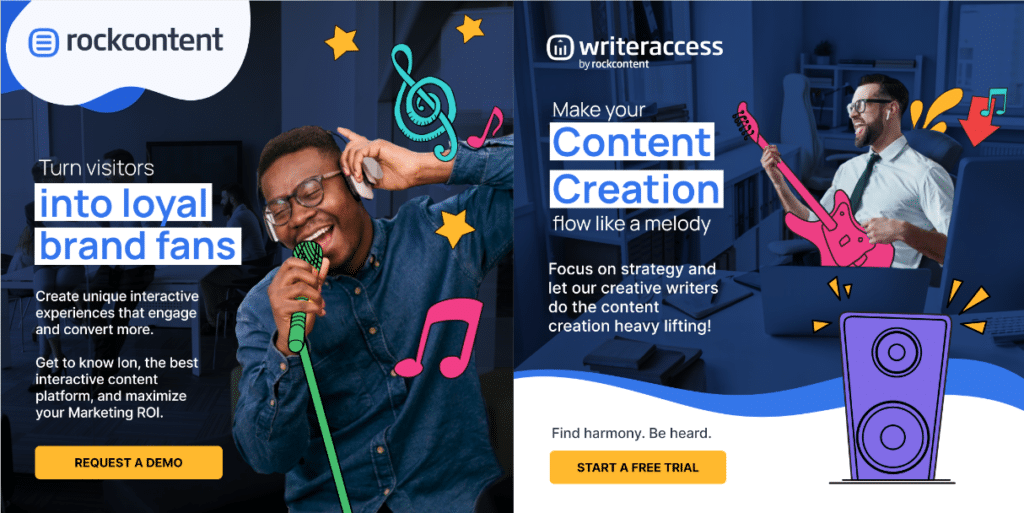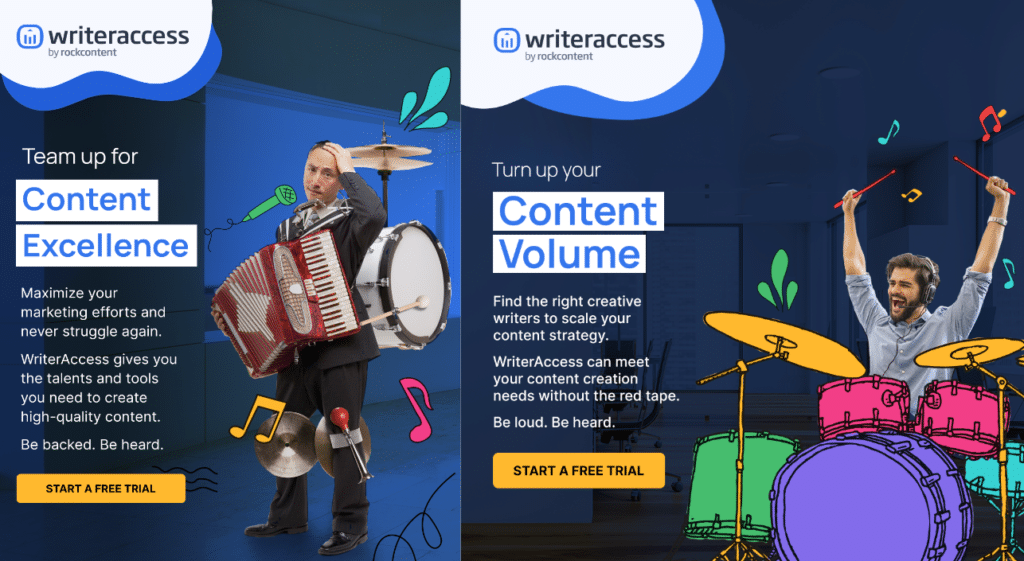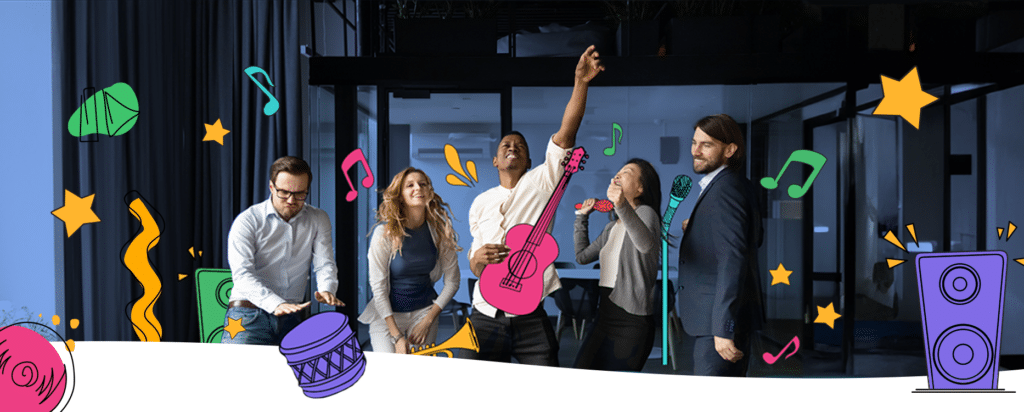In a world where big budgets often steal the spotlight, we embarked on a daring adventure – launching a B2B brand campaign with absolutely no budget.
It might not have been the ideal scenario, but let me take you on a captivating journey through our experience and reveal how it all unfolded.
- The Dynamic Duo of Branding and Activation
- Embracing Customer-Centricity
- The Importance of The Campaign at This Game Changer Mode Moment
- Launching The Campaign
- “It’s Times Like These You Learn to Live Again”
The Dynamic Duo of Branding and Activation
We’ve been working on a branding campaign for quite some time.
You might know that marketing works in two different ways.
→ Branding is when you create memories that influence behavior over the long term.
→ Activation, on the other hand, seeks an immediate response from marketing efforts, without necessarily forming long-term memories.
This latter approach is often referred to as classic leadgen in the world of B2B marketing. It encompasses paid search or display advertising. Think about Amazon’s daily deals or our own WriterAccess’ 14-day free trial, it’s those limited-time promotions. It’s performance marketing.
As is often the case in B2B (too often), we have always given priority to activation/leadgen – and this in a way makes sense for a start-up like Rock Content in its first years of operations.
Activation delivers immediate results, supporting our monthly pipeline. You can measure the return on investment of it, in (nearly) real-time. On the other hand, branding takes time, its results are long-term and not so easy to measure.
But it’s through branding that you will generate demand. Both are important disciplines and should go hand in hand. The first supports the second, and the second complements and completes the first.
It’s like having a marketing model operating at two different speeds; you must balance the two speeds and adapt them to your specific situation. Too much activation results in insufficient demand and strong conversion, but limited growth; excessive brand-building risks create a robust demand but weak conversions.
To achieve sustainable long-term growth, you need to have a good level of demand and a good level of conversions.
Both brand building and activation are important and should go hand in hand: the first supports the second; the second complements and completes the first.
In fact, the campaign’s goal is to increase mental availability. The Ehrenberg-Bass Institute defines mental availability as “the propensity of the brand to be thought of, or noticed, in buying situations.”
In simpler terms, in relevant buying situations, customers easily recall brands with high mental availability.

Embracing Customer-Centricity
While this seems simple, this school of thought requires a radical shift in the way B2B marketers approach marketing. To be precise, mental availability requires marketers to become less brand-centric, and more customer-centric.
Putting ourselves in the minds of our customers isn’t easy. Here are some primary questions we should be addressing:
- On what occasions / at what moments in our consumers’ lives can our brand come to mind?
- What opportunities are we currently overlooking?
- Where are our competitors beating us in the battle for mental availability?
- Are there competitors in those moments, from products in other market categories that we haven’t recognized as our direct competition?
The following step should be to immerse ourselves in those moments by identifying the memory structures linked to them.
We call these moments category entry points (CEPs), and the more of them our brand can engage with, the greater our “mental availability” becomes, and the more products we are likely to sell.
So we started identifying these moments, and we came up with several variations of our new branding campaign.

Here is a non-comprehensive list of CEPs that came out after a diagnosis phase, which included interviews with both customers and internal stakeholders. The campaign addresses the following “moments” in the lives of marketers, our potential buyers.
- Marketers want to easily scale content creation, without hiring, with no fixed costs
- They seek a comprehensive solution, not single tools. They need marketing solutions and services to cover all phases across the entire customer lifecycle
- Marketers want to increase customer engagement
- They love to feel pride, a sense of achievement, success, becoming a rock star
- Marketers want to be efficient and have an easeful work experience
- Marketers desire recognition for their excellent work
The Importance of The Campaign at This Game Changer Mode Moment
This is why we decided to work on a branding campaign and the core concepts within it.
Our journey was supposed to begin with a creative agency, maybe a branding consultant, and we had high hopes for our branding campaign. However, budget setbacks – our branding budget was canceled, multiple times – forced us to pivot in-house, and it turned out to be a unique adventure filled with enthusiasm.
Before you get the wrong idea, I am not suggesting this path for everyone. However, halfway through, armed with nothing but ideas and enthusiasm due to our zero budget, we boldly decided to move forward on our own.
Back to the category entry points, we kept them in mind as we crafted the campaign. We began with the diagnosis, identified our CEPs, and ultimately developed a creative design and copy to address each of them.
The full process took a few months, and since we didn’t have any external help, we had to focus on it internally. We created a cross-functional squad, met on a weekly basis, conducted interviews, and identified the CEPs. We also did our homework on the copy and the creative side.
Where rock music and content meet
It is not a typical B2B campaign. We are infusing humor into it, and the campaign plays with rock music and our company name (Rock Content) as a main theme while addressing all CEPs.
This approach was not new for our seasoned employees (our rock music-inspired t-shirts were a huge hit at Inbound last year); now, we’re taking that creative energy and channeling it into a structured campaign.
Moreover, the campaign introduces our products and solutions; it can be easily adapted for both US and South American markets. The primary goals of our campaign are twofold: to set us apart from the competition and capitalize on buyers’ situations, fostering brand recognition and trust through memorable experiences.

Launching The Campaign
Our initial strategy was a carefully crafted combination of paid advertising and organic outreach. The goal was to maximize our reach and impact. However, as I previously mentioned, we encountered a budgetary shortfall that forced us to pivot entirely to an organic launch.
This meant relying on our in-house resources, such as our dedicated team of content creators and social media experts. We invested our energy to generate buzz and engagement through compelling content, strategic SEO efforts, and grassroots promotion within our target audience.
The heart of our organic launch was a comprehensive social media distribution strategy. We enlisted our dedicated social media team to craft and share content across platforms like Facebook, Instagram, Twitter, and LinkedIn.
Through these channels, we fostered authentic interactions with our audience, sparking discussions, hosting live events, and encouraging user-generated content to create a dynamic online community around our brand and product.
But what truly set our organic launch apart was the unwavering commitment of our passionate employees. Recognizing the significance of internal advocacy, we established an employee engagement program.
This initiative empowered our team members to become brand advocates by sharing our content, participating in discussions, and championing our cause on their personal social networks.
Their authentic enthusiasm not only expanded our reach but also enhanced our brand’s credibility, as our employees were seen as genuine ambassadors of our brand.
“It’s Times Like These You Learn to Live Again”
This line from the Foo Fighters’ song came to mind as we step into this new chapter for our brand.
Our journey is not just a story about launching a B2B brand campaign; it’s a tale of audacity, adaptability, and team spirit. We embarked on this daring adventure of a zero-budget branding campaign, navigating through challenges and making bold decisions along the way.
We stand at the threshold of possibility, armed with creativity, dedication, and a rock-solid team. Our commitment to this approach has already allowed us to establish a powerful, organic presence in the digital landscape, sowing the seeds of engagement, awareness, and brand loyalty.
Though it wasn’t the ideal route, our shift from initially planning a mix of paid and organic initiatives to ultimately launching with a completely organic strategy showcases our team’s adaptability and unwavering dedication.
As we move forward, we eagerly anticipate the unfolding chapters of our campaign, with its twists, turns, and results that will shape our future. Stay tuned, for the best is yet to come!








